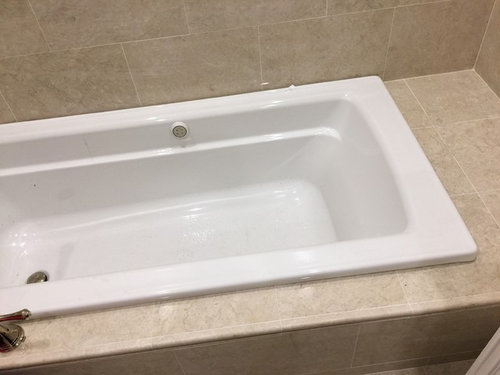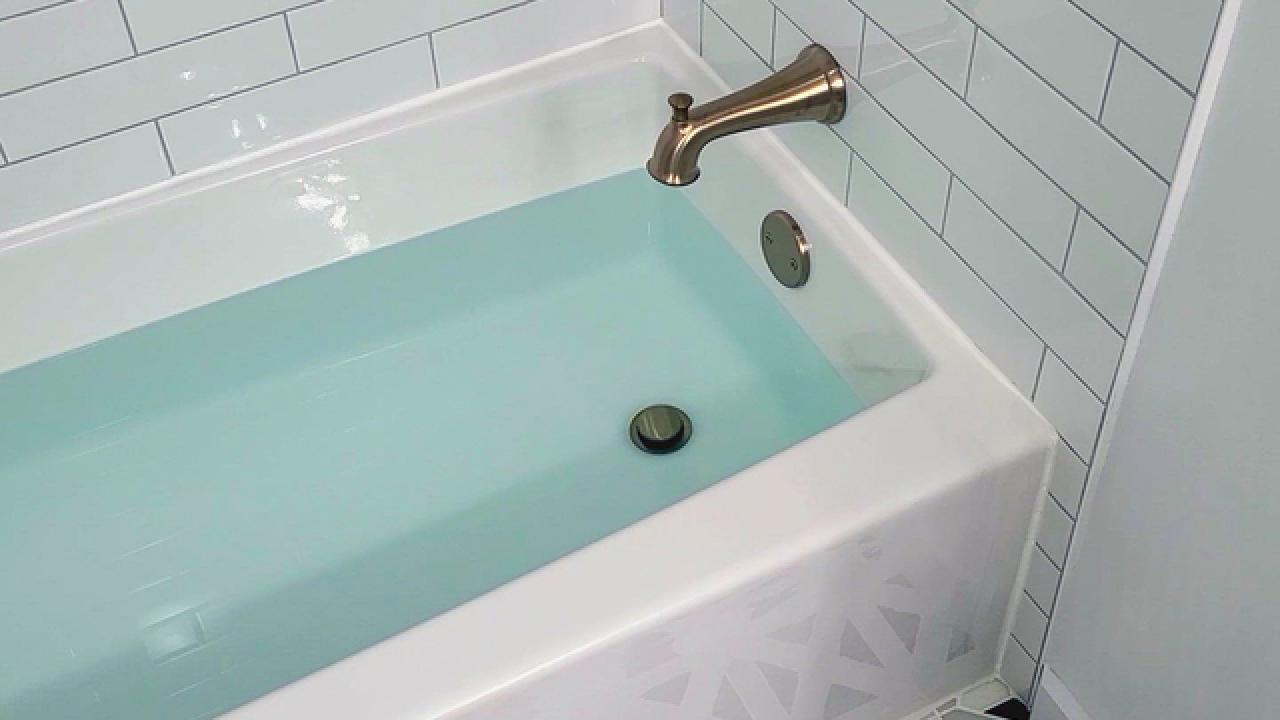Getting Familiar with Plumbing: Your Starting Point for Bathtub Installation
Getting Familiar with Plumbing: Your Starting Point for Bathtub Installation
Blog Article
Listed here down the page you can discover additional awesome help and advice in relation to How to Install a Bathtub.

Installing a bath tub isn't exactly brain surgery, yet it does need strong plumbing, carpentry, and in some cases, tiling abilities. Changing an old bathtub with a new one is additionally a moderately challenging project. If the old bathtub is readily accessible, the project can relocate quickly; if you have to open a wall surface to get rid of the old tub and position the new bathtub, the job is a lot harder. In either case, the project is within a residence handyman's skills, although you will certainly need an assistant to move out the old tub and also embeded in the new one. See to it you have qualified yourself for the task and also fit attempting it. Instead of employing a service provider to take control of a halfway-completed task, it is better to think about employing one prior to you start. Chances are you may need a professional plumber to make tube connections.
This short article will certainly assist you install a brand-new tub in your shower room if you have actually currently acquired a new bathtub and also do not require to change the arrangement of your previous supply of water pipes.
Your tools and also material checklist ought to consist of the following:
Removing Old Touches
If you need to change old faucets with brand-new ones as a part of your setup, after that the first thing you need to do is separate the supply of water. After doing so, activate the faucets to drain pipes any type of water remaining in the system. The procedure of eliminating the existing taps can be fairly problematic due to the restricted access that is usually the case.
Use a basin wrench (crowsfoot spanner) or a faucet tool to reverse the nut that connects the supply pipelines to the taps. Have a cloth prepared for the staying water that will originate from the pipes. Once the supply pipelines have been gotten rid of, use the very same device to loosen the nut that holds the faucets onto the bath/basin. You will require to quit the single taps from transforming throughout this procedure. Once the faucets have been gotten rid of, the holes in the bath/basin will certainly need to be cleansed of any type of old sealing compound.
Prior to moving on to fit the brand-new faucets, compare the pipe connections on the old taps to the brand-new faucets. If the old taps are longer than the brand-new faucets, then a shank adapter is needed for the brand-new faucets to fit.
Suitable New Touches
If the tails of the new taps are plastic, after that you will certainly require a plastic adapter to avoid damage to the string. One end of the adapter fits on the plastic tail of the faucet and also the various other end supplies a connection to the current supply pipes.
If you need to fit a monobloc, after that you will certainly call for minimizing couplers, which attaches the 10mm pipe of the monobloc to the basic 15mm supply pipe.
Next, place the faucet in the installing opening in the bath/basin making certain that the washing machines are in area between the faucet as well as the sink. Secure the faucet in place with the manufacturer supplied backnut. When the faucet is securely in place, the supply pipelines can be attached to the tails of the faucets. The taps can either be linked by using corrugated copper piping or with typical tap connectors. The previous type should be attached to the faucet finishes initially, tightening only by hand. The supply pipelines can later be connected to the various other end. Tighten up both ends with a spanner after both ends have actually been connected.
Setting up the Tub
Utilizing both wooden boards under its feet, position the bathtub in the required setting. The wood boards are helpful in equally spreading out the weight of the tub over the location of the boards rather than concentrating all the weight onto four small factors.
The next objective is to make certain that the bathtub is leveled all round. This can be attained by checking the spirit level as well as adjusting the feet on the tub until the level checks out degree.
To install faucets, fit all-time low of the outermost adaptable tap connector to the suitable supply pipeline by making a compression sign up with; after that do the exact same for the various other faucet.
Turn on the supply of water and examine all joints as well as brand-new pipework for leaks and also tighten them if necessary. Load the tub as well as also inspect the overflow electrical outlet as well as the regular electrical outlet for leaks.
Finally, repair the bathroom paneling as defined in the manufacturer's instruction manual. Tiling and securing around the bath tub needs to wait till the bathtub has been utilized at least once as this will settle it into its final setting.
Planning for the Installment
To start with, the supporting structure provided with the bathroom ought to be fitted (if needed) according to the manufacturer's directions. Next, fit the taps or mixer to the tub. When suitable the faucet block, it is important to make sure that if the faucet features a plastic washer, it is fitted in between the bathroom and also the faucets. On a plastic bathroom, it is additionally practical to fit a supporting plate under the taps device to avoid strain on the bath tub.
Fit the versatile faucet ports to the bottom of both taps using 2 nuts and also olives (often supplied with the tub). Fit the plug-hole electrical outlet by smearing mastic filler round the sink outlet opening, and then pass the electrical outlet through the hole in the bathroom. Utilize the nut supplied by the maker to fit the plug-hole. Analyze the plug-hole electrical outlet for an inlet on the side for the overflow pipe.
Next, fit completion of the versatile overflow pipeline to the overflow outlet. After that, screw the pipeline to the overflow face which must be fitted inside the bath. Ensure you utilize every one of the provided washers.
Attach the catch to the bottom of the waste outlet on the bath tub by winding the thread of the waste outlet with silicone mastic or PTFE tape, and screw on the catch to the outlet. Connect the bottom of the overflow tube in a similar manner.The bath must currently be ready to be fitted in its last setting.
Tiling Around the Bathtub
In the area where the bathroom satisfies the floor tile, it is required to secure the joins with a silicone rubber caulking. This is essential as the fitting can relocate enough to fracture an inflexible seal, causing the water to pass through the wall in between the bath and the tiling, bring about complications with moisture and also possible leakages to the ceiling below.
You can choose from a range of coloured sealants to blend in your components as well as installations. They are sold in tubes as well as cartridges, and are capable of sealing spaces as much as a width of 3mm (1/8 inch). If you have a bigger gap to fill, you can fill it with spins of drenched paper or soft rope. Keep in mind to constantly fill up the tub with water before sealing, to enable the motion experienced when the tub remains in usage. The sealant can crack rather early if you do not think about this movement before sealing.
Conversely, ceramic coving or quadrant tiles can be made use of to border the bath or shower tray. Plastic strips of coving, which are easy to use and also cut to dimension, are also conveniently readily available on the market. It is a good idea to fit the ceramic tiles utilizing waterproof or waterproof adhesive as well as grout.
Bathtub Installation
How Important Is A Bathtub To Your Home?
High-quality baths, showers, and other bathroom updates are necessary when considering a smart investment in your home. It’s a room that you go to every day and one that is constantly being used by guests.The bathroom is one of the top trafficked rooms in a home and also one of the most valuable in terms of home resale.
Install Piping Before Tub
You will be using your existing drain and waste vent system, but pipes required include the hot and cold water supply lines and a pipe leading to a shower head. A mixing valve and shower head are also needed. Air chambers may be required.
Position the Tub
Lower the tub into place so that the continuous flange fits against the wall studs and rests on 1’x4' or 2’x4' supports. Anchor the tub to the enclosure with nails or screws inserted through the flanges into the studs.
NOTE: Remember, bathtubs and shower stalls may require support framing. A bathtub filled with water is extremely heavy, so check building codes and framing support before installing the tub.
Assemble Drain Connections
Assemble the bathtub drain connections by connecting the tub overflow with the tub drain above the trap, not beyond it. The trap will have a compression fitting that screws over the arm of the overflow assembly.
Place a Pipe For the Shower Head
First, locate a brass female threaded winged fitting and attach it to a framing support via a screw or a nail. Then run a pipe up the wall for the shower head. Sweat or solder the other side of the brass fitting to the top of the pipe.
Attaching Hot and Cold Water Lines
Attach your water lines for both hot and cold by sweating these directly into the hot and cold ports of the mixing valve. The mixing valve will be how water enters the tub’s system, not by the pipes themselves.
Install the Spout
Extend a piece of 1/2 inch pipe, or whichever length is specified in the manufacturer’s instructions, for the tub spout. Sweat on a male threaded fitting at the end of the pipe or use a brass nipple of the proper length and a 1/2 inch cap.
NOTE: At this point you should have your rough-in plumbing work inspected before proceeding further.
Check For Leaks
Restore the water pressure and check the drain connection and the supply pipes for any sign of leaking.
estore the Bathroom Wall
Replace the wall with moisture-resistant drywall as a base for your wall covering. Seal the joints between the wall and your new tub with silicone caulk as protection against water seepage.
https://www.berkeys.com/2016/12/02/bathtub-installation-dallas/

I'm very fascinated with Tools You Need to Install a New Bathtub and I am hoping you enjoyed the new page. Sharing is nice. You just don't know, you could be helping someone out. Thanks so much for taking the time to read it.
Request A Quote Report this page